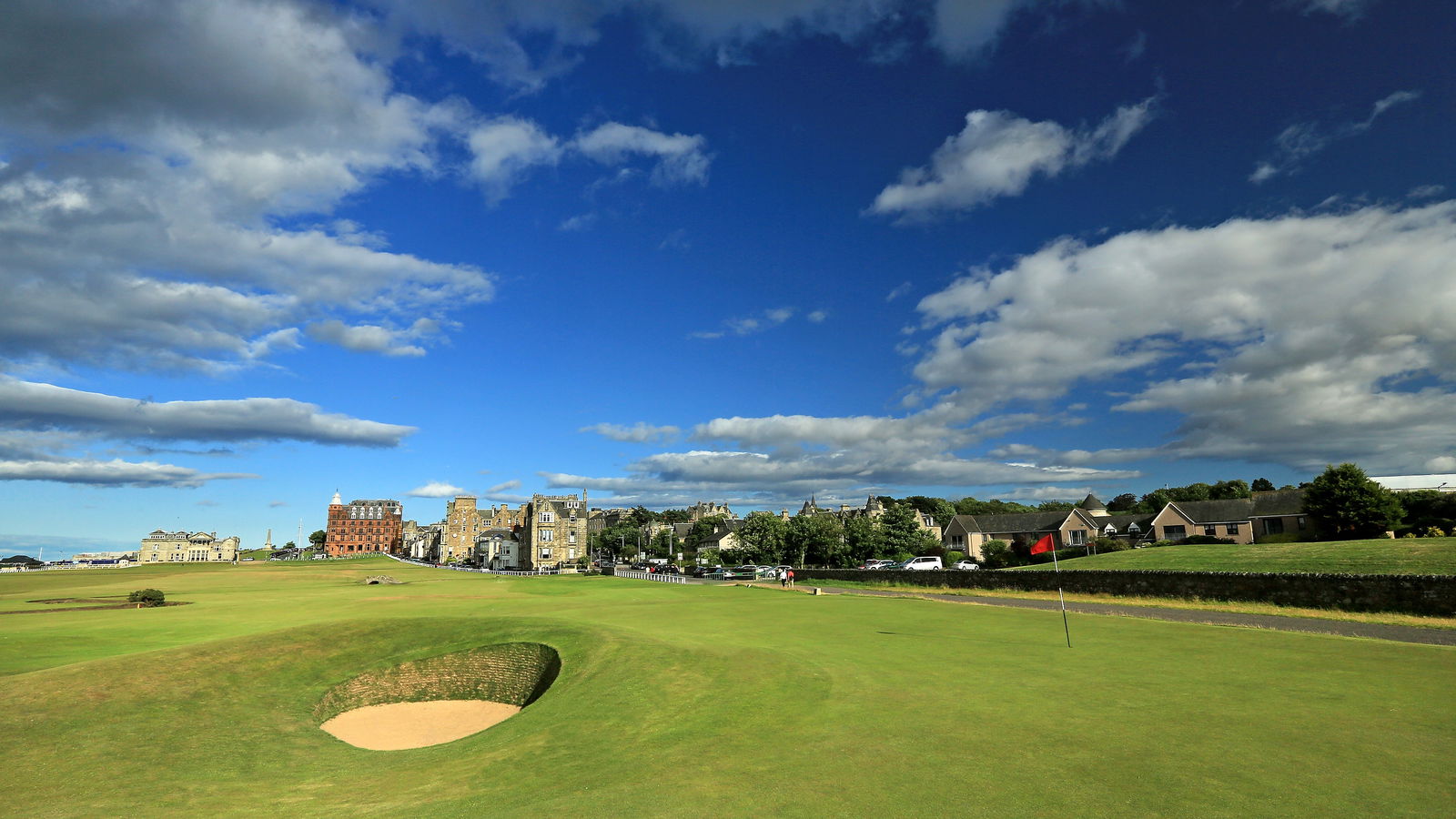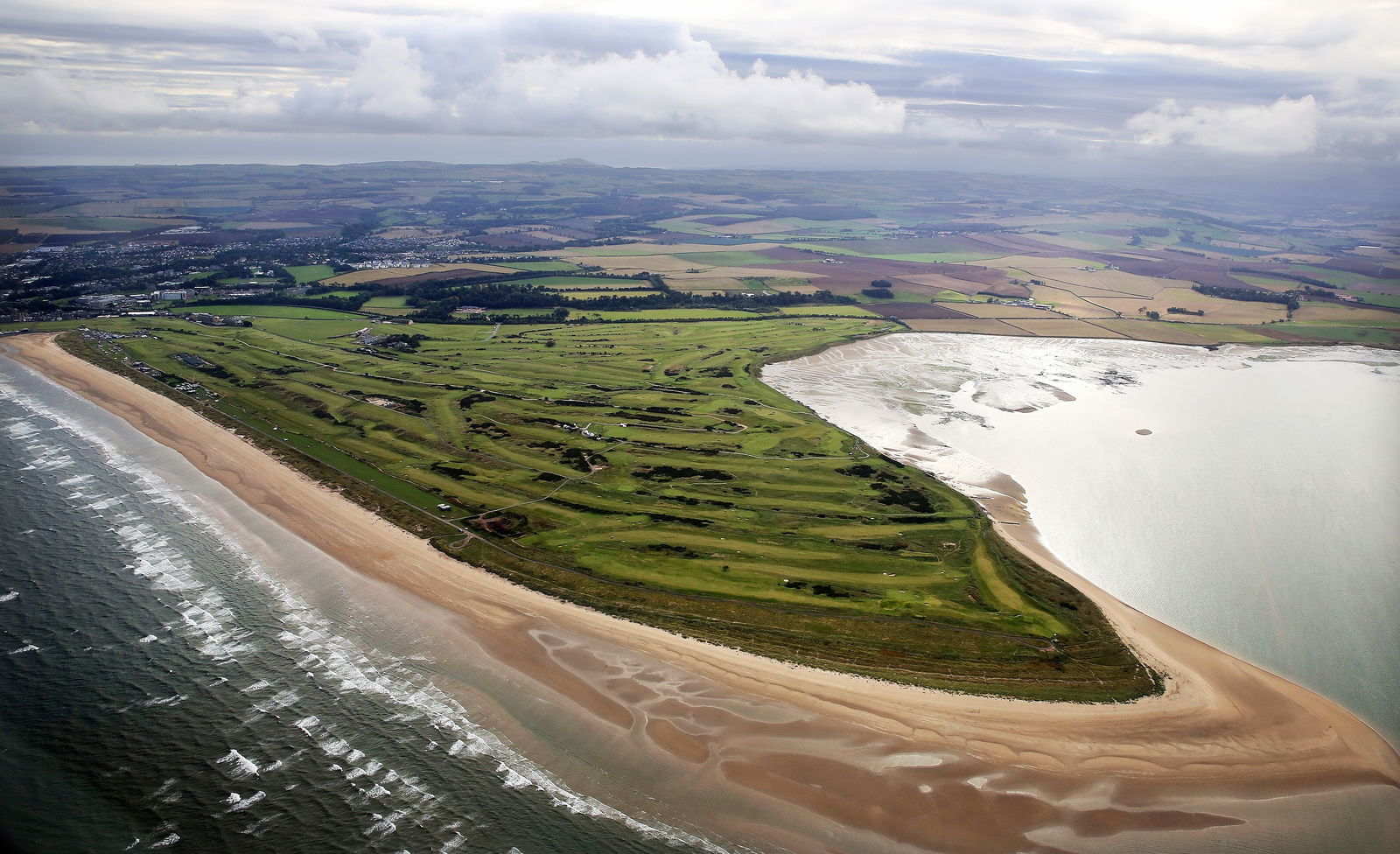The Open 2015: Ken Brown's keys to the Old Course
BBC commentator Ken Brown explains why putting is such a big deal at St Andrews

"St Andrews is totally unique and a strategic test that will keep you on your toes from start to finish. You might even hate it the first time you play it. But once you know your way around it's brilliant."
BBC Sport commentator Ken Brown is a St Andrews aficiando and took some time out of his Open preparations to give us the lowdown on how to tackle the Old Course.
Look out for his Ken on the Course segments for the BBC - and watch out for the drones and the duck, he says.
Ken, known as One Putt in his day, has just released a new book, aptly entitled “One Putt – the ultimate guide the perfect putting”, so we’ll start with the greens at St Andrews.
"The more I studied the Old Course, the more I loved it. And the more I loved it, the more I studied it" - legendary golfer Bobby Jones.
Putting
Because of the seven double greens you are going to have a lot of long putts so your lag putting has to be up to scratch. On a technical note you need to have enough weight in the putter head and the face must have enough loft. The ball will roll a bit better on a “slower” green if you have a bit more loft.
The key is to strike the sweet spot more consistently. That’s not so easy to do the longer back you swing the putter. You must stay still - any movement you can easily lead to mishits which is a slippery slope to nowhere.
And try to swing nice and steady, don’t flick your wrists. In judging the weight, it’s more instinctive than mechanical and comes through practice, but the greens will be very consistent.
Simon Dyson column: Why the Open is the best major by miles
You’ll be doing a lot of putting from off the greens as well because the fairways are not dissimilar. There’s a real skill in putting through the fringe onto the green but on links it’s a good one to have in the locker. People like Martin Kaymer have got it down to a fine art.
You might often be putting up some steep little bluffs which is where knowing where to miss it comes in handy.
As a consequence of all these long putts you’ll also leave yourself a lot of five and six footers so you have to hole out well. In some ways winning at St Andrews is more about putting than it is some of the other courses because you are going to do more of it.
Putting in wind is all about stability. You’ve got to keep as still as you can when the elements are rocking you around. Take a wider stance, try to keep the upper arms linked with your body and temper your expectations. You get so frightened you‘re going to miss one, but remember that so will the others so take the pressure off yourself, or you will end up missing all of them.
Driving
With modern equipment driving is a little easier at St Andrews and some of the bunkers are no longer in play.
But on six or seven tee shots you can’t see where the ball will land so you have got to do your homework in practice. You will pick a line to your target, it might be a TV tower, or the edge of a gorse bush and know that if you hit there when the wind is in this direction you will find the fairway.
Once you’ve got your lines it is not too bad but if you are not sure, particularly if the wind changes direction, and you make an indecisive swing, generally the ball doesn’t go where you are aiming.
Then you’ve got to know where the bunkers are. Generally, both going out and coming back, the further left you are off the tee, the safer it is, but harder to get close to the pins.
It is a big advantage to have played at St Andrews before. You could learn it in a couple of days – Tony Lema did - but you need a good caddie. Jordan Spieth's got work to do.
St Andrews golf guide: The Old Course is not the only gem in these parts
It depends on the wind, but I don’t think they will overpower it. With no breeze or downwind they can drive nine, 10 and maybe 12 and with a big wallop they could knock it a few yards short of the first.
But St Andrews has its own defences and I think the R&A will push the boundaries with pin positions this time. They haven’t in the past, on the basis that it looks a bit daft with greens the size of football fields to have the flag two yards from the touchline.
But it’s amazing how a pin four yards up a slope is so much easier than a pin two yards up a slope.
Second shots/approach shots
If you’ve got experience you’ll know where the pins are and what the tactics are to get to those. It is still a very tactical course which is why the players love it so much.
Getting the ball in the right spot to get to the next good spot is crucial.You need a calculating mind to plot your way around.
That is why the Faldos and Tigers have done so well. You have got to have good ball control and the right tactics - when to hit a driver, when to hit a three wood, when to hit an iron, when is the time to have a go.
It tests the whole of your game, but on a nice sunny day, with the way these lads play, you could see some 65s or lower depending on how strong the wind is and where the flags are.
Short game
You might be surprised to hear there are not that many linksy bump-and-runs with a seven iron at St Andrews.
That’s because the greens are so big you tend to hit quite a lot of them so you will putt more. If conditions are kind they could hit 15-18 greens, far more than they would at, say, Troon.
If you do miss a green you’ll either putt or maybe use something with a bit of loft to flip it up some banks.
Sand play is not quite so critical either at St Andrews because it really is more about avoiding as many of the 112 bunkers as you can. But there are one or two crucial traps – near the 11th green, on the 12th and the Coffins on 13 - that require a cool head and sound technique.
Players will test in practice just how close to the face you can get and still get the ball up quickly enough. It changes every year depending on the amount and consistency of the sand. They will work on those shots, getting to ball up in the air almost vertically, before they come.
Verdict
The first time you play the Old Course you will probably hate it, but once you know your way around you will think it is brilliant. It is a permanently interesting test, and there are so many different ways of getting the ball from A to B. It certainly keeps you on your toes.

